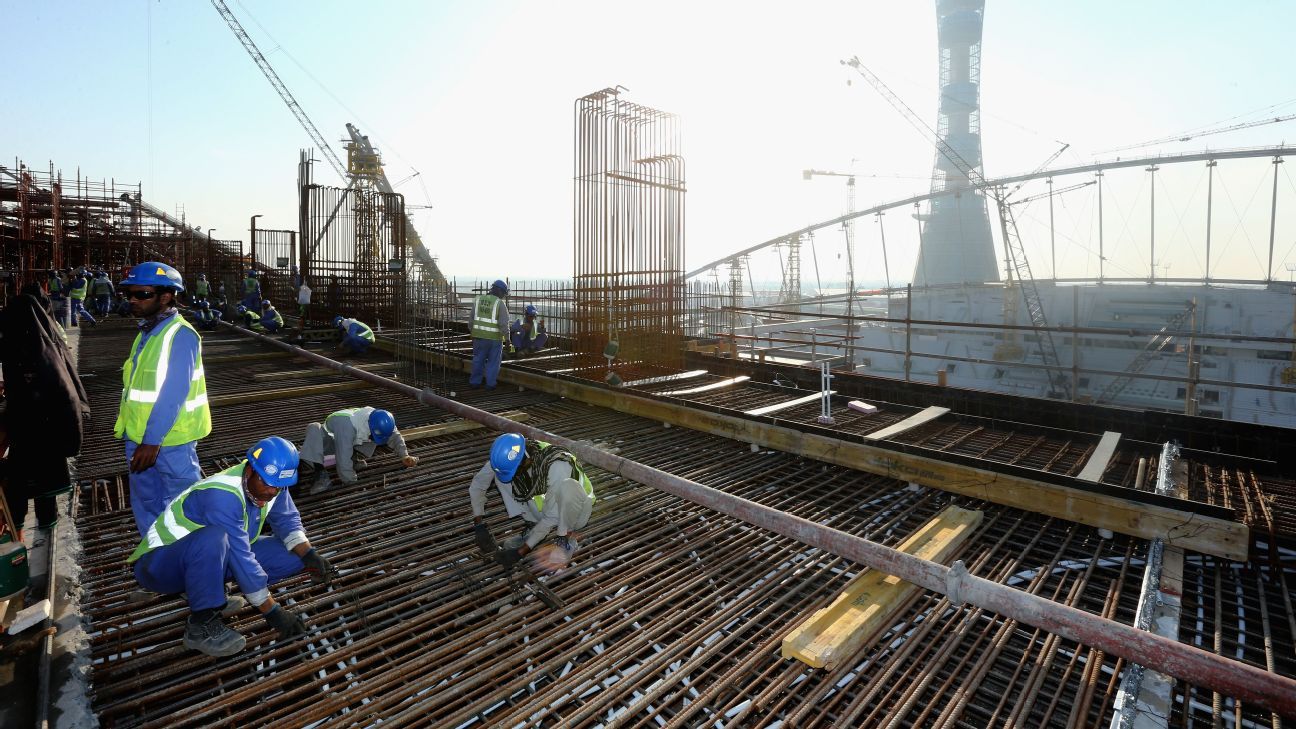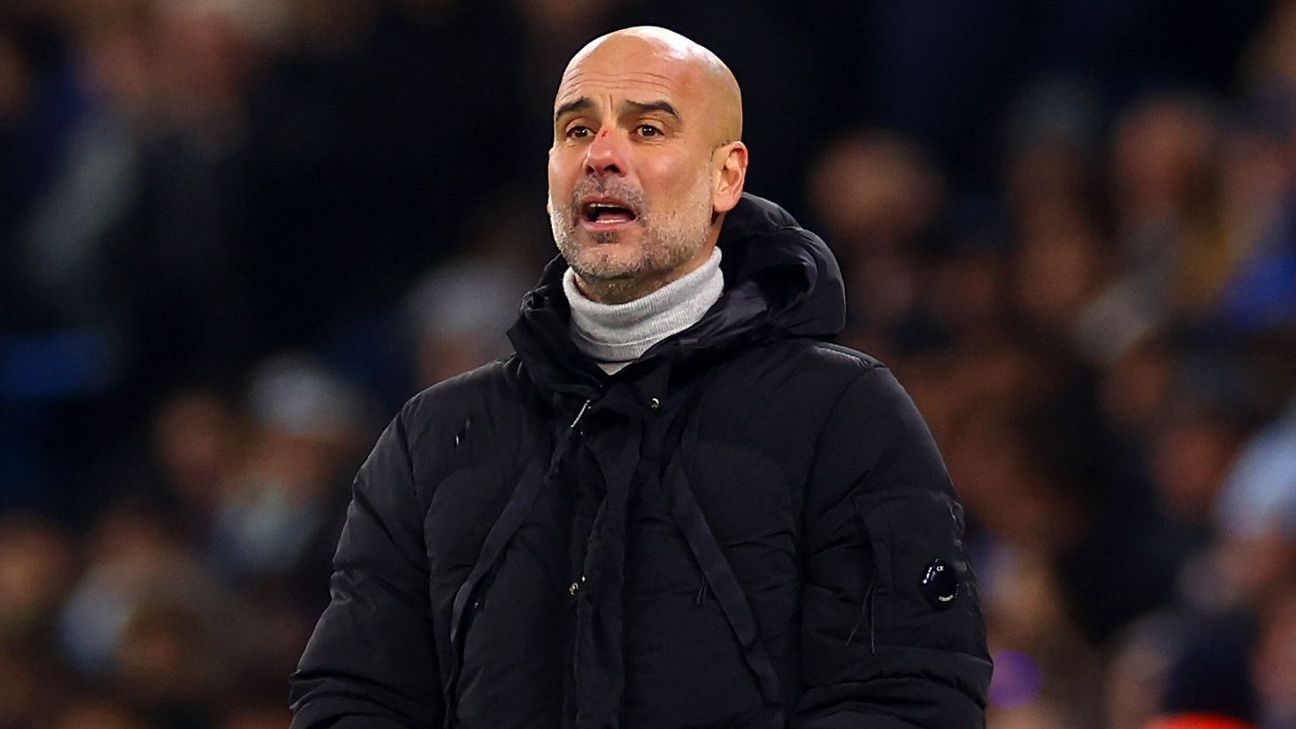
The United States' elimination from the Gold Cup last week represented a checkpoint of sorts. For most of the year, various iterations of the team gathered in the wake of the FIFA World Cup with a pair of interim coaches and a hazy understanding of how the team would be shepherded forward.
It wasn't an ideal way to begin the new World Cup cycle ahead of the tournament's return to home soil in 2026, but the past seven months always figured to be mostly inconsequential regardless of who was roaming the sidelines.
- Stream on ESPN+: LaLiga, Bundesliga, more (U.S.)
The quick recap is this: After coach Gregg Berhalter's contract was not renewed and then expired Dec. 31, his assistant, Anthony Hudson, guided the team through a pair of January friendlies (vs. Serbia and Colombia), two CONCACAF Nations League group stage matches (vs. Grenada and El Salvador), and a friendly against Mexico. When he departed to take a job in Qatar, the baton was passed to B.J. Callaghan, who coached the team to wins in the Nations League semifinals and final (vs. Mexico and Canada respectively) and through five games at the Gold Cup -- even after Berhalter was rehired June 17 -- in which the team was knocked out by Panama in the semifinals.
In total, the U.S. won six games, drew five and lost once (twice if we include going out to Panama on penalties). They outscored their opponents 31-8 and 53 players earned at least one cap.
For the most part, Berhalter's two former assistants also kept the status quo. There were the natural tweaks that come with different opponents and rosters, but the style and player selection was all very familiar.
Here's a look back at the past several months, and some things to watch in the coming months:
Welcome, Balo
Without question, the most important development since the World Cup came when Folarin Balogun, the New York-born and England-raised striker pledged his international future to the USMNT. Striker was the team's glaring weakness throughout World Cup qualifying and in Qatar, and Balogun's arrival immediately transforms the attack. He scored 22 goals across all competitions on loan from Arsenal with French side Stade de Reims last year -- he was fourth in the Ligue 1 goalscoring standings -- and at 22 years old has potential to develop into a global star.
Though he's played only two games in red, white and blue, his appearances in the Nations League against Mexico in Canada provided an exciting glimpse into what's to come.
Where should Gio Reyna play?
Callaghan's most significant divergence from Berhalter was in how he used Reyna. Except for a 15-minute stint as striker against the Netherlands in the World Cup, Reyna was used exclusively on the wing under Berhalter. He had some freedom to roam, but he was not a central, attacking midfielder. That changed in the Nations League to great effect, when Callaghan shifted Reyna centrally and played him ahead of two midfielders (Yunus Musah and Weston McKennie, and Musah and Brenden Aaronson). There are multiple factors in play here, but Reyna in that spot -- with Balogun up top -- made the team look more dangerous than at any point in several years.
Having Reyna move inside forces some difficult decisions, namely what to do with the celebrated "MMA" ("Musah, McKennie, Adams) midfield? The group worked well together in Qatar, but collectively it was lacking in the final third. This calls for experimentation in the fall.
With Reyna, there's also the elephant in the room that needs to be accounted for. Berhalter acknowledged in his re-introductory press conference that there was "work to do" in repairing his relationship with Reyna after the embarrassing family drama involving them played out after the World Cup. It's going to remain a topic until both of them indicate they've cleared the air.
Herculez Gomez speaks about B.J. Callaghan's team selection for the USMNT's Gold Cup semifinal vs. Panama.
Fresh start, confirmed
Several key players are training with new clubs in Europe.
Christian Pulisic, AC Milan: Pulisic's time in West London was a series of highs and lows, but ultimately -- from an American standpoint -- it is defined by his lack of consistent opportunities, stemming from various injuries. With a new club in a new league, this is a massive inflection point in Pulisic's career. He's entering his prime and the expectation is that he'll have a key role in Milan. We've seen it at international level, but the time is now for Pulisic to produce at a high level in Europe (and stay healthy).
Brenden Aaronson, FC Union Berlin: After a $30 million move to Leeds United from FC Salzburg, Aaronson appeared in 36 of 38 matches in the Premier League but sought a move elsewhere once the team was relegated. With Union Berlin, Aaronson joins a team in the UEFA Champions League that won't be plagued by the defensive inadequacy that was present at Leeds.
Timothy Weah, Juventus: Weah's move to Juventus might be viewed differently depending on the perspective. For the player, it's an impressive move to a big club where he presumably had a defined role waiting for him in the starting XI. That's all fantastic. The reason for some skepticism from a USMNT standpoint, though, is that the role is at right wingback -- a position the national team doesn't use.
Weah was used progressively further back on the field during his time at Lille, and that's what caught Juventus' attention. Still, he'll do a lot of what he does as a right winger for the U.S., where he provides width and stretches the backline.
Ricardo Pepi, PSV Eindhoven: For all that's made about MLS players getting to Europe, Pepi's past two years have been a reminder that going to Europe for Europe's sake isn't always the best path forward. Each situation is different. Fair or not, Pepi's move to Augsburg likely cost him a spot on the World Cup roster and so the move to PSV feels like a best-case scenario. After an impressive 12-goal season on a team (Groningen) that got relegated, Pepi could be a Golden Boot contender on a Champions League club.
Herc Gomez explains why it's not surprising that no player from the USMNT or Mexican national team made the ESPN FC 100 list.
On the move?
The transfer carousel isn't done, and here are a few more players to keep an eye on:
Tyler Adams, Leeds United: Adams was one of the bright spots in a mostly dismal season at Elland Road, and he should have plenty of suitors to keep him in the top-flight. He's been linked with a number of clubs, but so far nothing has materialized.
Weston McKennie, Juventus: McKennie's loan spell at Leeds didn't work out, and now he's back with Juventus with an unclear future. McKennie reported for preseason, but multiple reports in Europe indicate he's unlikely to take part in the club's American tour and won't be back.
Yunus Musah, Valencia: Might we see Musah team up with Pulisic at AC Milan? That possibility has been hinted at for weeks, with La Gazzetta dello Sport reporting Monday that Musah has agreed personal terms with the club. He doesn't necessarily need a move, but it will be interesting to see him and Pulisic together.
Sergiño Dest, Barcelona: The 2022-23 season was mostly a lost one for Dest, who fell out of favor at Barcelona and was hardly used during his loan at AC Milan. Dest said last week that he intends to fight for his place at Barca, but he will be better off finding somewhere to play consistently if he doesn't earn a role during the preseason.
Crossing the pond?
Brandon Vazquez and Jesus Ferreira: So long as they are in MLS, it's hard to see either Ferreira or Vazquez seriously challenging either Balogun or Pepi on the depth chart. Still, both players are approaching that stage of their career where it's time to level up. But, again, they shouldn't go just to go; they have to find clubs where they'll be used. It's better to be an every-game starter in MLS than a seldom-used player in Europe.
Walker Zimmerman and Miles Robinson: Zimmerman and Robinson were both key players during World Cup qualifying, and there is nothing left for them to prove in MLS. It's time to see how their game translates elsewhere.
Herculez Gomez and Sebastian Salazar believe Jesus Ferreira is ready for a move to a European club.
What's next?
Berhalter's return to the sideline will come in St. Louis on Sept. 9, in one of four friendlies the team has lined up this fall. Given the lack of continuity over the past months, that's when the 2026 cycle will truly begin. Before the focus is on the World Cup, however, the team can first set its eyes on preparing for next summer's Copa America.
Uzbekistan, Sept. 9, St. Louis, Miss.
Oman, Sept. 12, Minneapolis, Minn.
Germany, Oct. 14, East Hartford, Conn.
Ghana, Oct. 17, Nashville, Tenn.















 Phone: (800) 737. 6040
Phone: (800) 737. 6040 Fax: (800) 825 5558
Fax: (800) 825 5558 Website:
Website:  Email:
Email: 






